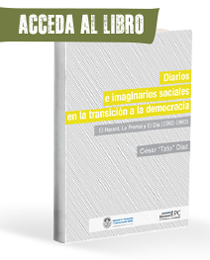Semanario La Argentina
DOI:
https://doi.org/10.24215/24690457e027Abstract

En esta oportunidad, Ratón de hemeroteca y videoteca propone revisitar las amarillentas páginas de La Argentina, el pequeño periódico femenino que circulara durante la época en la que gobernó la provincia de Buenos Aires el brigadier general Juan Manuel de Rosas. Para esto, retomaremos algunos conceptos vertidos en el libro La Argentina 1830-1831. Edición facsimilar(Díaz, 2011) en el que se ofrece la reproducción facsimilar del periódico.
Downloads
References
Auza, N. (1988). Periodismo y feminismo en la Argentina 1830-1930. Buenos Aires, Argentina: Emecé.
Auza, N. (2004). La Aljaba. Dedicada al bello sexo argentino 1830-1831 [Estudio preliminar]. La Plata, Argentina: Archivo Histórico de la Provincia de Buenos Aires / Instituto Bibliográfico Antonio Zinny.
Batticuore, G. (2005). La mujer romántica. Lectoras, autoras y escritores en la Argentina: 1830-1870. Buenos Aires, Argentina: Edhasa.
Díaz, C. L. (2011). La Argentina 1830-1831. Edición facsimilar [Estudio Preliminar]. La Plata, Argentina: Instituto Cultural de la Provincia de Buenos Aires.
Rosenblat, Á. (1964). El nombre de la Argentina. Buenos Aires, Argentina: EUDEBA.
Sosa de Newton, L. (1986). Diccionario biográfico de mujeres argentinas. Buenos Aires, Argentina: Plus Ultra.
Published
How to Cite
Issue
Section
License
Copyright (c) 2018 Improntas

This work is licensed under a Creative Commons Attribution-NonCommercial-ShareAlike 4.0 International License.
The acceptance of an original by the journal implies the non-exclusive transfer of the patrimonial rights of the authors in favor of the publisher, who allows the reuse, after its edition (postprint), under a Creative Commons License Attribution-NonCommercial-ShareAlike 4.0 International.
According to these terms, the material can be shared (copy and redistribute in any medium or format) and adapted (remix, transform and create another work from the material), provided that a) the authorship and the original source of their publication (magazine and URL of the work) are cited, b) is not used for commercial purposes and c) the same terms of the license are maintained.
The assignment of non-exclusive rights implies that after postprint in IMPRONTAS de la historia y la comunicación authors may publish their work in any language, media and format; in that case, it is requested that they signal that the material was originally published by this journal.
Assignment also entails the authors’ authorization for the work to be collected by SEDICI, the institutional repository of the Universidad Nacional de La Plata, and for it to be indexed in the databases that the publisher thinks appropriate for enhancing the visibility of the published work and its authors.
In addition, the journal encourages authors to submit their works to other institutional and thematic repositories after their publication in IMPRONTAS de la historia y la comunicación, under the assumption that offering society unrestricted access to scientific and academic production contributes to a greater exchange in global knowledge.








.jpg)


.png)


.png)





















